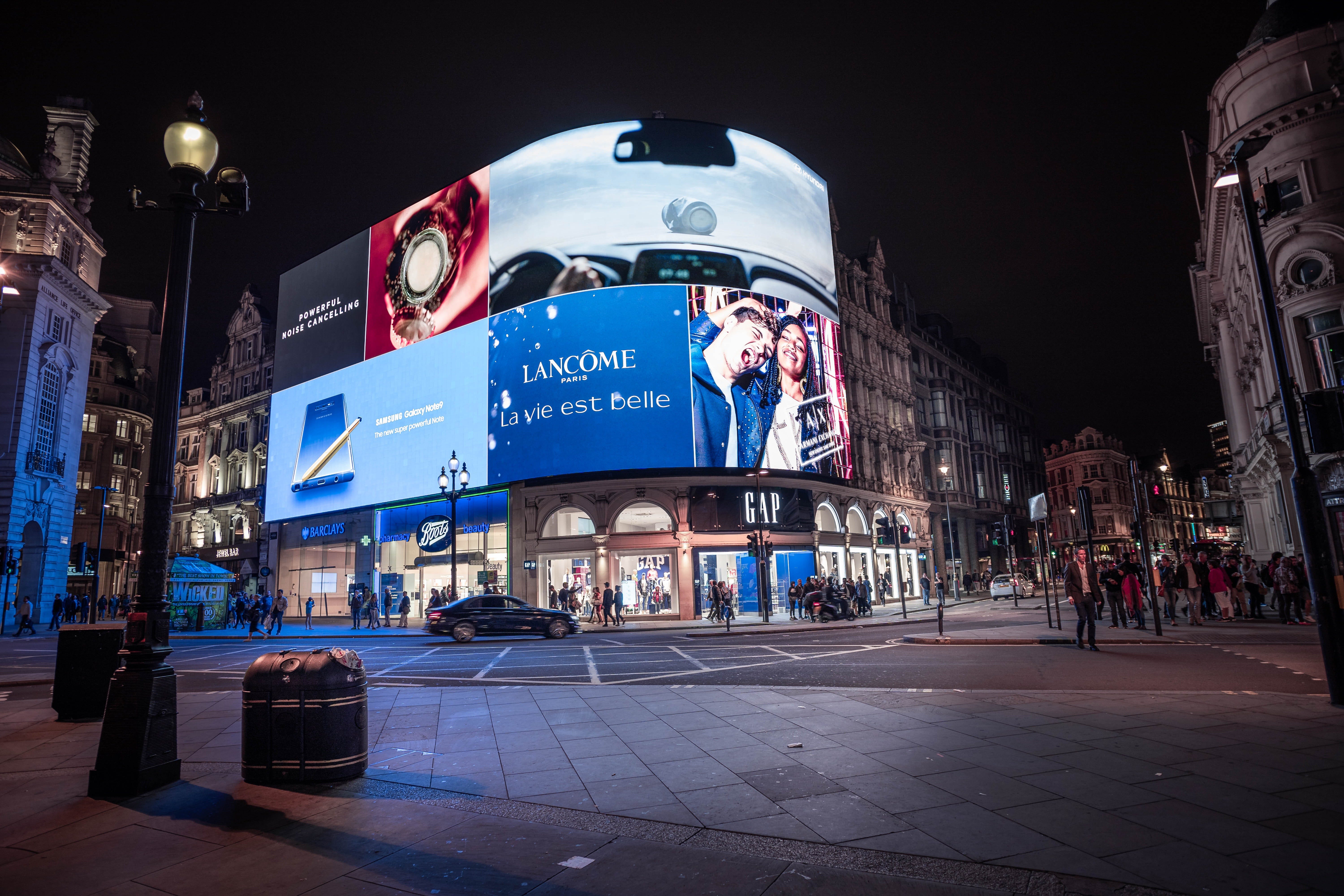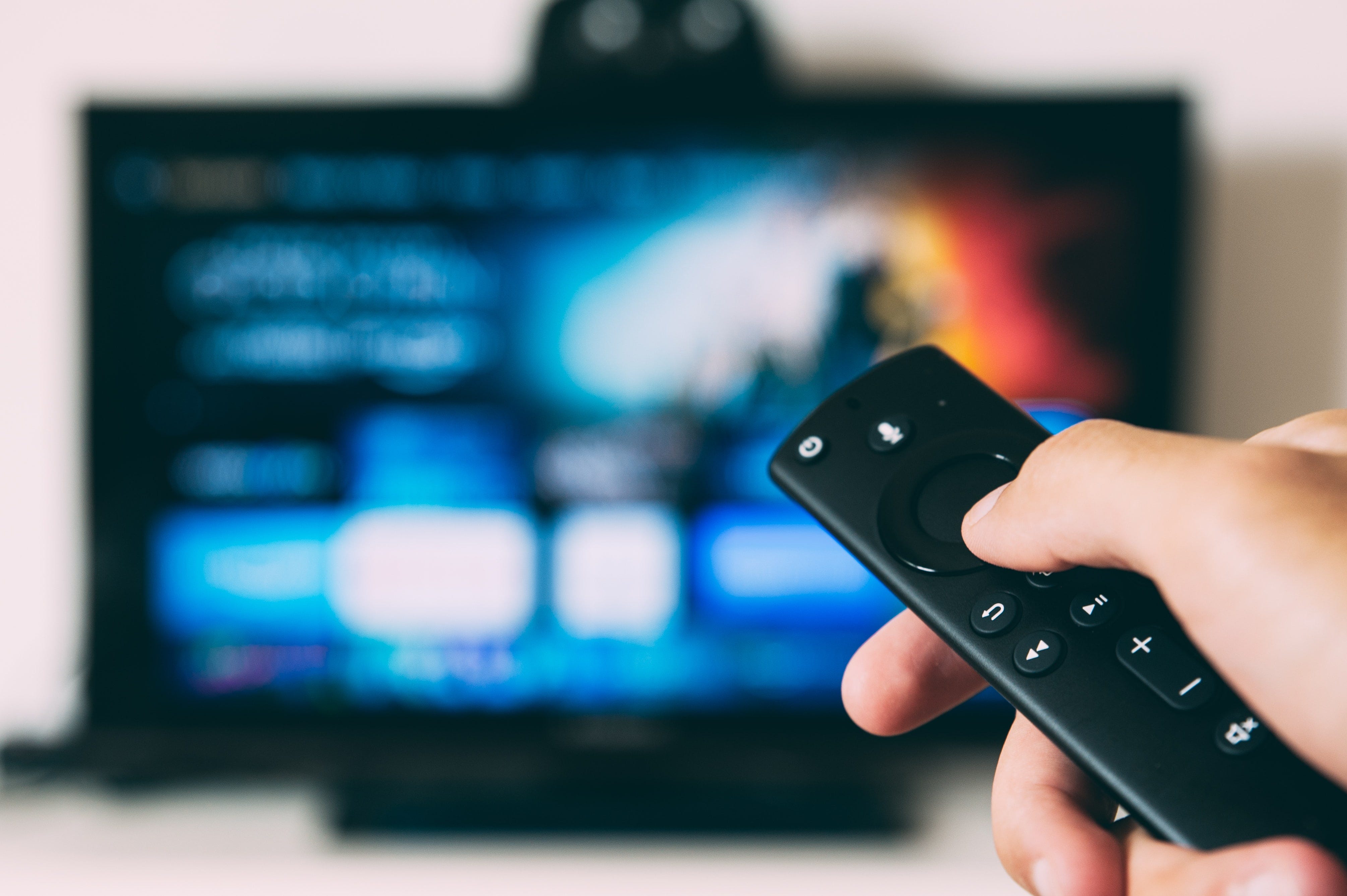Whether you’re a small business or big company looking to expand and improve your brand, deciding on how you’re going to invest your money is always a little tricky. Since there are so many ways to invest in your brand, it seems hard to choose the right strategy that will give you the best returns. Let’s imagine that you have $500,000 to put into your brand today and look at some options of what that cash can get you.
Billboards

According to Wikipedia, a billboard is large outdoor advertising typically showing witty slogans and distinctive visuals, and it’s located primarily on major highways, expressways, or principal arterials, and command high-density. The earliest known billboard rentals go back to 1867 but the practice of Flyposting existed even in the 15th century.
The cost
The cost of renting a billboard depends on localization and visibility, differs from city to city, it’s higher or lower in different areas of the town, country. The cost of a billboard In New York goes from $3,000 to $20,000/month depending on location and visibility. We’ll assume you are going for a top spot, so your $500k will get you 25 months. In London, the prices of billboards go roughly between $600 — $2800/month. In Hong Kong, you can get billboards for $5,000 per month for a small billboard on the Midlevels escalator to over 100,000 per month for large billboards on buildings around Central and Causeway Bay.
Accountability
When it comes to accountability of this kind of advertisement, it’s pretty much nonexistent as it is very hard to track how many people ended up on your website or/and purchased your product after seeing your ad on a billboard. You can be creative and use discount codes or other ways to try and link the purchases with something your audience saw in the ad, but still, they would have to remember those after seeing them in a split of a second, so hard to achieve.
Conclusion
So it looks like if you have a new business and want to get the word out, and a decent budget to spend, you can use billboard advertising. It does not seem like a good long term strategy due to cost and the fact there is no accumulation in its effects — the moment you stop paying for a billboard, it stops working for your brand.
A Killer Location

Getting a perfect spot for your outlet is an important part of the physical business and the better the location — the higher your conversions and visibility. Your chances for building a strong brand are higher if your address is closer to your target audience, especially if you rely heavily on selling offline. We will take a look only at renting prices since buying a shop/office of decent size in a good location doesn’t seem to fit a $500,000 budget (Paris — $ 15,867/m2, New York — $ 17,191/m2, Hong Kong — $ 28,570/m2). You should also consider what audience you’re getting at a mall vs. other types of retail locations.
The cost
The average cost of rent for good locations in Paris is $100,000 — $200,000 per month meaning that you can pay 2–5 months of rent with $500,000. Outlet costs in London go from $5,000-$112,000, so with some average price, you can get 10 months of rented space for $500,000. In New York, most areas have an average price per square foot depending on how marketable that location is. For example, a store in a popular shopping center located directly in front of a busy highway may run $350-$2000 per square foot. So, if we take an average of $1000, for 500 square feet/42m2, that would cost you $500,000 per month. Even if you pay 350$ per square foot it’s $665,000 per month which still doesn’t fit into our budget. So you’re left with some not so much visited locations that cost $142,500 and give you 3 months of rented space for your business. According to Reuters, annual retail rent in high-end shopping areas in Hong Kong averaged $4,328 per square foot, which is nearly 50 percent more than for similar districts such as upper Fifth Avenue in Manhattan.
Accountability
It is relatively easy nowadays to measure the effectiveness of a physical location. Sales would be an obvious indicator, surveys can be held with customers and a physical location is also great to keep direct contact with your target audience.
Conclusion
There are some great advantages in selling face-to-face, no doubt having a good physical location creates trust and authority with your customers. On the downside, you need to count on higher revenues, to cover maintenance, rent, taxes, insurance, safety, decoration, wages for staff, etc. Another downside is that your sales are limited by working hours and only people in that city or area can reach you. If you change your location in the future, it would take time to spread the word and drive your customers to a new place.
TV advertising

According to AllBusiness article about the pros and cons of television advertising, on average, the general population spends over four and a half hours a day in front of the TV, making watching TV one of the most common modern leisure activities. The opportunity to reach a wide audience and to present your business is why so many entrepreneurs chose this way of advertising.
The cost
The average cost of a TV commercial production could easily range anywhere from $1,500 to $150,000 it really depends on your specifications. A 30-second commercial could cost as little as $1,500 — $3,500 to millions (say you hire Eminem or Bruce Willis). Once that’s done, you need to pay for time on the air and the cost depends on the program that’s on at the moment. For example, sports games as a very popular program raise the price significantly. Thirty-second spots during the half-time break of France’s group stage matches, initially slated at 73,000 euros, now cost 116,000 euros, which is $127,000. With this price, you can get 4 runs of your ad, given our $500k to spend. For the UK a 30-second ad during ITV’s breakfast schedule between the likes of Good Morning Britain or Lorraine costs between $ 3,600 to $5,000 on average. For a daytime slot, ads of the same time length come in at $4,500 to $5,500, while a peak rate alternative can cost anything from $13,000 — $35,000. In the US, a nationally-broadcast spot for a 30 seconds commercial cost around $115,000. An ad spot during the Super Bowl cost upwards of $5.25 million. In Hong Kong, the price of a 30-second prime time spot costs HK$1,575,960 ($200,000) so your budget covers two plays of your ad.
Accountability
Depending on where your TV ad is airing you may or may not be provided with viewership data and that data may be more or less detailed. A good way for smaller companies to track the effectiveness of a TV commercial is to create a virtual trail that links the advert to some specific action taken by the viewer. Similar to the billboard ads this can be a unique link to your site, a telephone number, or a discount code.
Conclusion
TV advertising can be a tricky business. There are many factors that would determine whether this is a good choice for your business, including the size of your company, your advertising budget, your target audience. That said, if you saw this adorable ad last Christmas, shot for just over $100 budget, you can tell everything is possible if you get creative!
Premium domain

“Premium domains are exactly what they sound like. They are domains that are more expensive than normal. There are many reasons why a domain will be considered premium, but it is usually clear why one domain name is worth more than another. For example, it shouldn’t be a big surprise that car.com would be worth more than automotive-in4mation123.biz.”
If you’re wondering if the premium domain is worth the investment, maybe this study will help. How much of the return on investment does this strategy offer? The domain itself creates an instant online brand that continues to define your online business for as long as you have it.
The cost
If you search for “how to value a premium domain name” you’ll get a lot of results and ideas — from expert appraisal to AI doing it for you. If you are lucky and do good research you may be able to get a decent name for $5k-10k. Voice.com sold last year for $30 million. So you can see there is quite a range. We have put together a short guide on how to value a premium domain name for your business, so whatever the cost is — you can decide whether that makes sense for you.
Accountability
Once acquired, a domain name is yours, so you can track all and any activity — where is your traffic coming from, how do people navigate on your site, where do they enter, where do they leave, etc. and use all that information to improve your marketing strategy and online presence.
Conclusion
A top-end domain name may not come cheap, so the budget is something you should consider. With our hypothetical budget of $500k you can acquire a really good domain to build your brand on, or/and a number of names as a strategy — say your .com brand match, some protective registrations (typos of your brand name for example), and local domain extensions, to appeal to your audience in different places around the globe. Getting the domain name is a one-time investment, there are renewal fees yearly with your chosen registrar that usually don’t exceed $10-$15/year per domain. There are no other extra expenses related to owning your domain name. Tracking the effectiveness of your domain and online presence is easy nowadays, so accountability for your activities and marketing campaigns will be high. Investing in your brand image as an ongoing process is cumulative, meaning the more you invest in it, the better it works for you and the higher value it has (Don’t believe that? Just ask how much Tesla would sell Tesla.com for or what is the value of Apple.com for Apple).
Radio advertising

“Spot TV advertising refers to the common advertising approach of buying 30 or 60-second ad placements on a particular station.” In order to properly select the right market for the radio ads, you should research average listeners per hour with demographic breakdowns. Let’s take a look at the costs, advantages, and disadvantages of advertising on the radio.
The cost
Most radio ads are 60 seconds, as opposed to the 30 seconds for TV. The cost of ad spots and packages varies greatly by location, but expect to pay $2,000 to $3,000 per week in cities or metro areas, according to Bizfluent. Article by Workspace, explains the costs of radio ads In London with this simple math: “As a rule of thumb, radio advertising is charged at a rate of approximately $2,45 per thousand listeners at one time. To clarify, if a show has 100,000 listeners at 10 am, then buying a 30-second spot at that time will cost you $244. The late show’s 10,000 listeners at 11 pm would only cost $24. Generally, except for a slot of 30 seconds to cost around $300 — $1,200 per week, depending on how often your ad is broadcast and number of listeners.” In New York, radio advertising costs range from $200 to $5,000 per week depending on location and the size of the listening audience. The cost of producing the commercial is $1,000 to $2,500 depending on what is included like music, voice actors, and editing. Information on Paris radio advertising cost is hard to find, as well as for radio prices in Hong Kong, but previous examples should serve well enough to give you basic info and paint a picture in your head about how radio ads work.
Accountability
Measuring the effectiveness of radio advertising can be hard. Common advice on the topic is to compare sales or traffic before and after the adverts have been aired, try to link the listeners to your site by providing a unique link (that eats your air time though and you have to make sure your online address is easy to spell and remember) or phone number (same point as for the URL).
Conclusion
While being very affordable, radio ads need to be planned very well and they need to target the same audience over and over again so they can be remembered. The ability to schedule ad spots throughout the week at various times of the day is what gives you better chances for reaching a wide local audience. Cons of spending your budget on a radio ad are poor attentiveness and fragmentation, a lack of visual appeal, and complex national buying processes. Radio can only impact your audience through sound so if your brand is based on a strong visual identity this may not be the best choice for you.
Social Media advertising

Taking your business online never seemed easier and more important than now, in a time of internet expansion. Since most people are spending hours of their day on Social Media, it has become a very popular platform for advertisement, but also a very expensive one.
The cost
Social media advertising costs vary by platform, bid type, like cost-per-click (CPC), audience reach, location, etc. Many networks require a minimum daily budget. This rate varies by platform, with some basing their required budget on the bid type, like impressions, clicks, likes, or views. Many, however, offer low minimum budgets so they go from $1 to thousands of dollars, depending on how much you want to spend. Average Advertising Cost (CPC) is cheapest on Facebook where it’s $0.97 per click, while the most expensive one is Instagram with $3.56 per click. Average Advertising Cost (CPM) which stands for click per impressions is cheapest on Twitter at $6.46 per 1000 impressions, and most expensive on Pinterest, where it’s $30 per 1000 impressions. So let’s say you want to reach 100,000 impressions. The price to achieve that would be between $356,000 — $3,000,000.
Accountability
You can monitor your ads activity relatively well on various social media as they offer an interface for business users to view how their campaigns perform. You can also track other performance metrics — leads you to get to your site from various social media campaigns, conversion rates, customer engagement with your content.
Conclusion
Social media ads are great for reaching out to a highly targeted audience. You can tailor your ads to people based on their location, interests, and personal tastes. The budgets are flexible so you can experiment and see what works best and to what extent. It is relatively easy to measure the effectiveness of your social media campaigns. On the downside there are rules and algorithms that often change, so your success on social media is highly linked to your budget invested in it and is not cumulative — as soon as you stop paying, it stops working.
Newspapers/Magazines/Print Media advertising

Newspapers are an easily available source of information which has been a practice for many years. Newspaper advertising is best for businesses that want to reach customers aged 35–45 on a local, regional, or national scale.
The cost
The average newspaper ad cost depends on the circulation of the paper, the size, day, and ink. A full-page ad in America can start at $2,700 and increase to $163,000 depending on these factors. The estimated ad rate for the magazine in France is $1,500 and this estimate is for a full-page, black, and white ad. The price of advertising in Hong Kong newspaper goes from $900 — $26,000 and that price can be per month, per release, or per 2 releases. In London, you can get ⅛ page ad for $340 and prices go up to the front and back covers with a price of $2,500.
Accountability
Similar to billboard, TV, and Radio advertising, the effectiveness of ads in a newspaper is hard to track. You can judge from influx of traffic to your site or in your physical location, sales, or try and track activity by providing a link from the newspaper to your site/phone/door.
Conclusion
Print advertising revenues have declined at a rapid rate over the past decade as advertisers are investing more digitally. Still, newspaper ads do work for many local and some global businesses. The average print newspaper reader has higher spending power on average as an audience. Newspaper ads are less intrusive since people are less likely to be interrupted by your ad in the paper than an ad on TV or radio. Newspapers are also seen as a trusted medium. If you have the budget for it, this can be a great addition to your marketing mix, especially fitting for topical or seasonal adverts.
To wrap it up, building a strong, independent brand is by no means easy, quick, or cheap. You should choose an investment strategy that matches your situation today, but will also positively reflect on your future goals by maximizing reach and customer loyalty, minimizing advertising expenses, and making your overall marketing more effective.
If you are not sure how your brand can benefit from a good domain name strategy, do feel free to reach out, we are always happy to help.
brand building brand investment brand name branding business strategy digital assets domain name

Previous Next